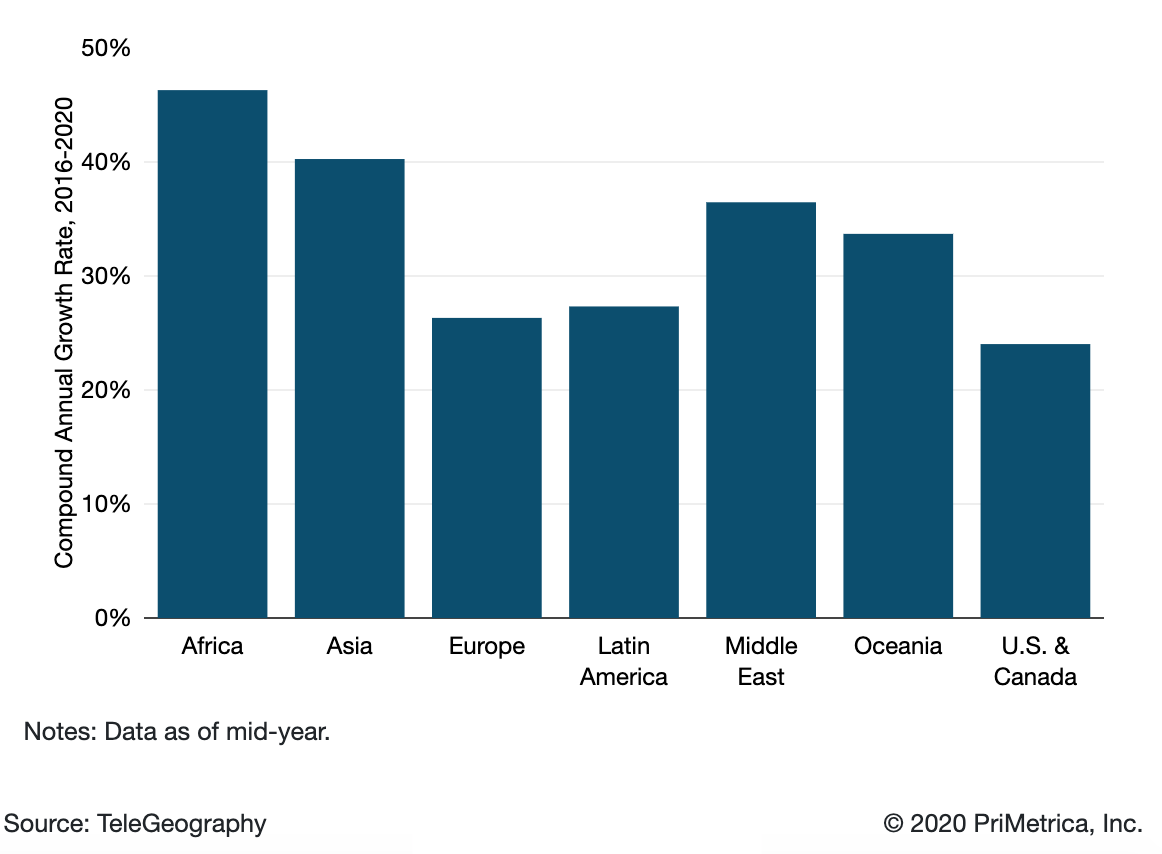The global outbreak of COVID-19 and its associated economic and social impact has laid bare the crucial, irreplaceable role that the internet plays in our daily lives.
Starting in March 2020, internet traffic patterns shifted and volumes surged as students around the world learned from home, adults worked from home, and everybody did at least something from home.
To its enormous credit, the internet bent but—for the most part—did not break as network operators scrambled to deal with the swell in traffic.
Global internet bandwidth rose last year by 35%, a substantial increase over the previous year's "modest" 26%. Driven largely by the response to the COVID-19 pandemic, this represents the largest one year increase since 2013, and has driven up the most recent four-year CAGR to 29%.
Total international bandwidth now stands at 618 Tbps. The pace of growth had been slowing, but we still see a near tripling of bandwidth since 2016.
Strong capacity growth is visible across regions. Africa experienced the most rapid growth of international internet bandwidth, growing at a compound annual rate of 46% between 2016 and 2020. Asia sits just behind Africa, rising at a 40% compound annual rate during the same period.
A Rising Tide Lifts All Boats
International Internet Bandwidth Growth by Region

International internet traffic growth largely mirrors that of internet capacity. However, traffic and capacity growth seldom move in perfect tandem. (Network operators will often add capacity in anticipation of traffic growth.)
Average and peak international internet traffic increased at a compound annual rate of 30% between 2016 and 2020, comparable to the 29% compound annual growth rate in bandwidth.
Let's look at the recent impact that COVID-19 has had on traffic growth.
As you might imagine, all that stay-at-home activity has had a pronounced impact on traffic. In 2020, average international internet traffic increased 48%, while peak traffic rose 47%.
As you might imagine, all that stay-at-home activity has had a pronounced impact on traffic. In 2020, average international internet traffic increased 48%, while peak traffic rose 47%.
COVID-19 is a global phenomenon, so it's no surprise that all the major regions of the world show traffic growth outpacing capacity growth in 2020. Latin America featured the largest disparity, with average traffic rising 59% and peak traffic rising 51%, compared to 32% for capacity.
Paul Brodsky
Paul Brodsky is a Senior Research Manager at TeleGeography. He is part of the network, internet, cloud, and voice research team. His regional expertise includes Europe, Africa, and the Middle East.


